The 40-Year Aesthete – Rolex Cosmograph Daytona
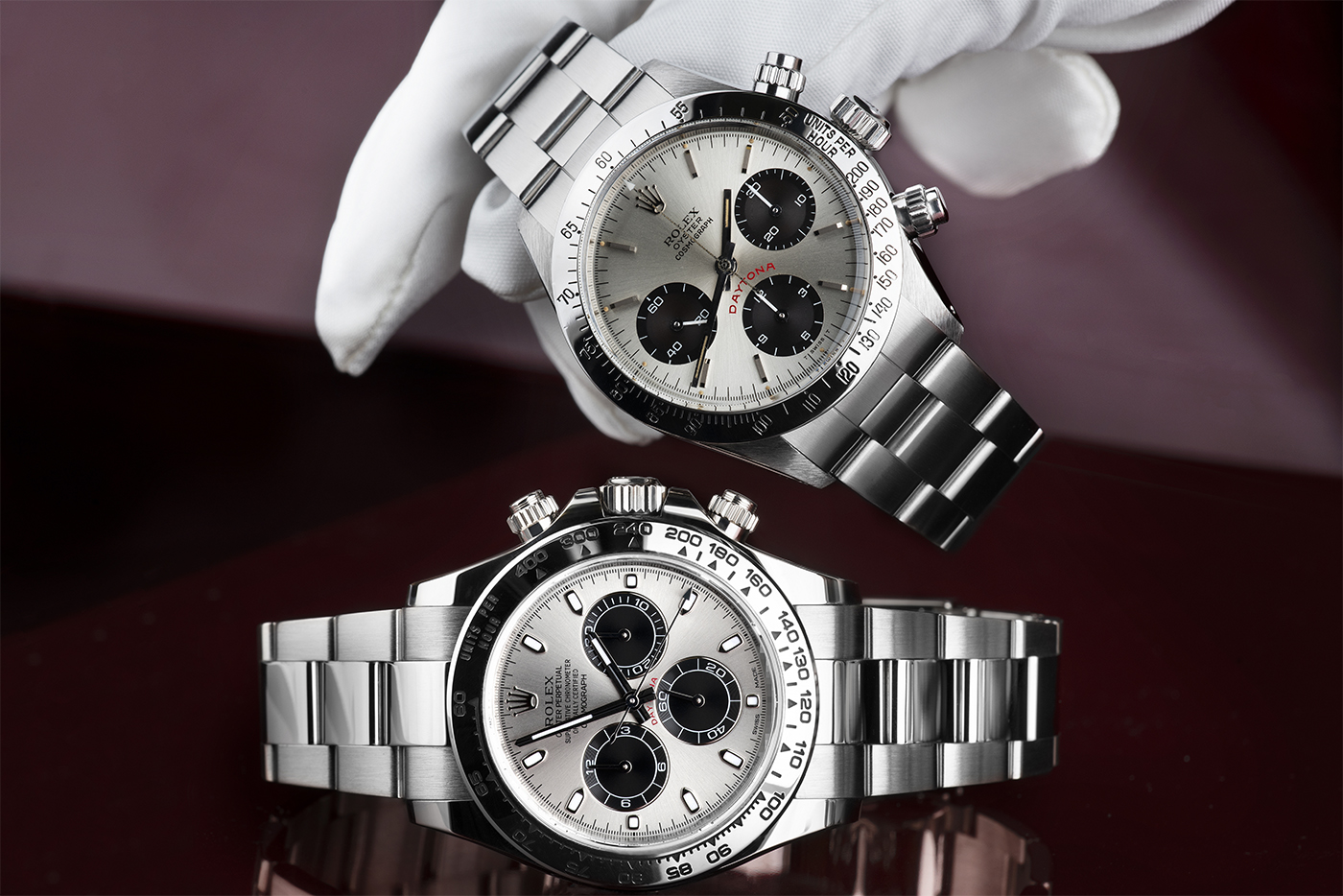
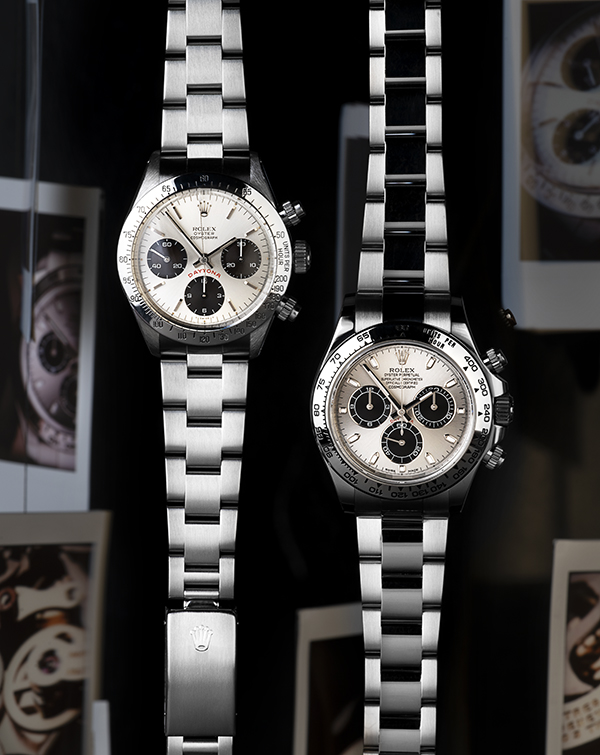
We were struck by the powerful similarity between these two Rolex Cosmograph Daytona watches in the Watch Club collection. One is a late-70s steel 6265 and the other is a current-model 18ct white gold 116509. It's rare to see such a strong bloodline between watches separated by so many decades. Maybe this shouldn't have been surprising – what other name in watches is more dedicated to its history than Rolex? This is just one of the reasons why Rolex watches are simply unrivalled at delivering financial stability along with immense aesthetic enjoyment with their watches.
_____________________________________
As a quick reminder, the Daytona is a Rolex chronograph ('stopwatch'), first introduced in 1963. It was preceded by similar, but more delicate-looking watches that did not have the Daytona's distinctive calibrated scale set around the outside of the watch. This tachymetric scale (used for gauging units per hour) doubles as a compression ring to render the acrylic glass water-tight.
A variant emerged with an 'exotic' dial that later came to be called the Paul Newman, a watch that has fuelled a 30-year passion for Daytonas among Rolex collectors. Are you finding it hard now to buy new 'gateway' Rolex models like Datejusts or Oyster Perpetuals? That's a direct consequence of the years-long waiting lists that had developed the Rolex Daytona. Read some of the Insider's Secrets to the Paul Newman in our separate article here.
_____________________________________
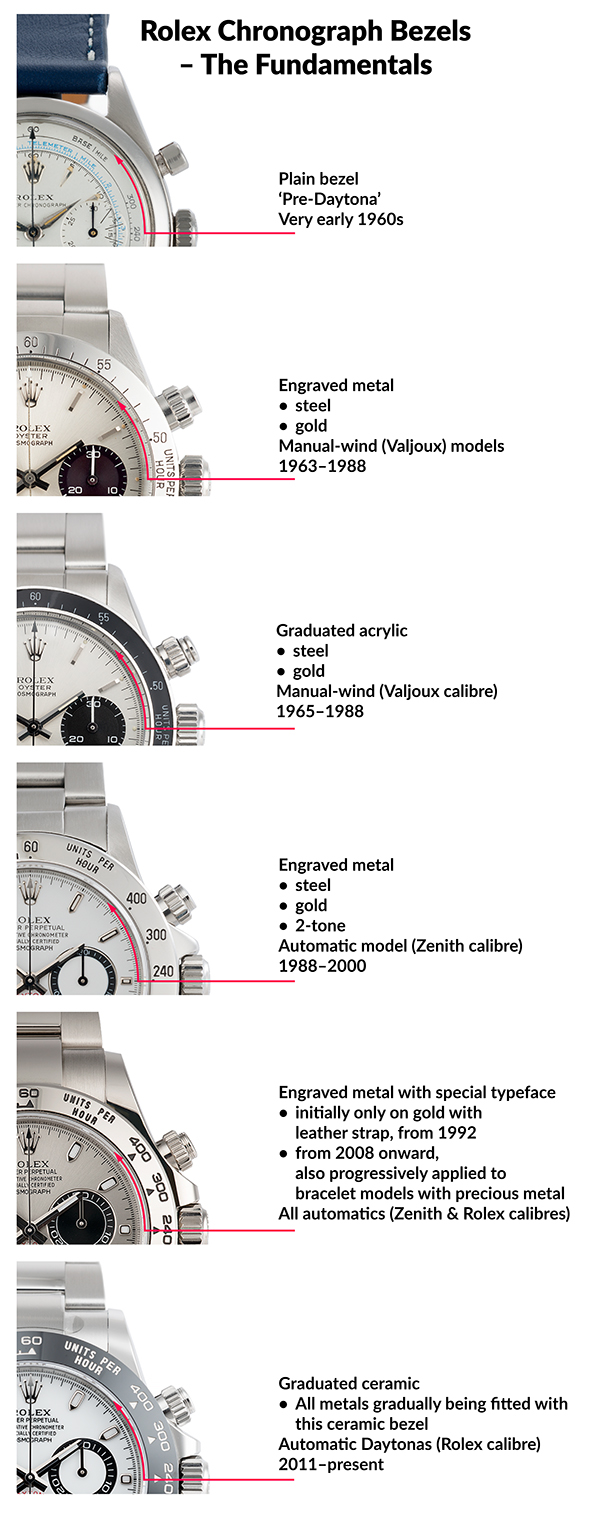
Early steel Daytonas had either a black acrylic or solid steel bezel. In the late 1980s, the acrylic option was discontinued, leaving the solid metal bezel as the only choice. Our example still has its engraved digits solidly filled with black enamel as when new. The 18ct white gold model faithfully matches the style of its predecessor, whilst using a slightly heavier font.
In 2011, Rolex began a phased withdrawal of Daytona models with metal bezel, replacing them with a newer style that has a ceramic bezel. About half of the Daytona range now comes as standard with ceramic, and it seems likely that soon all metal bezels will be fully withdrawn. Examples like the 18ct white gold model shown the main photos, which so beautifully echos its predecessor's style cues, will then vanish from the market. All factors point to further scarcity and rise in prices.
_____________________________________
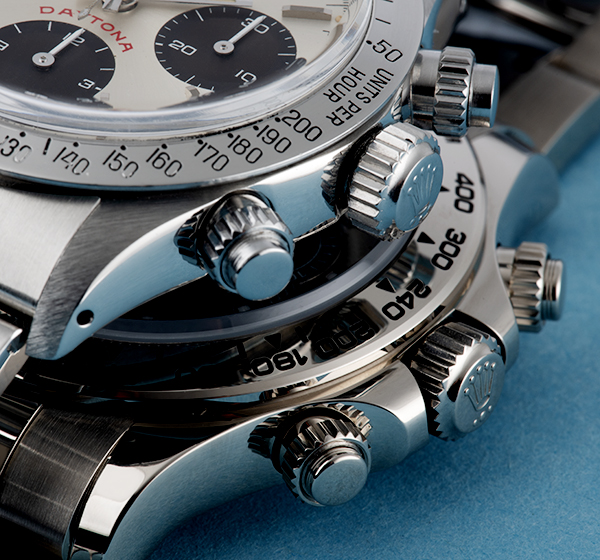
The aesthetic links between this late-1970s model 6265 (above) and the 2018 white gold model 116509 are very strong. Notice the locking chronograph pushers. In 1965, Rolex thrust forward the development of the Cosmograph Daytona by making it truly waterproof. Knurled rings were added to the previousy 'free' chronograph pushers, allowing the wearer to lock them out of action when not in use. The locking rings also add to the strength and solidity of the watch case, protecting the pushers from bumps and knocks.
_____________________________________
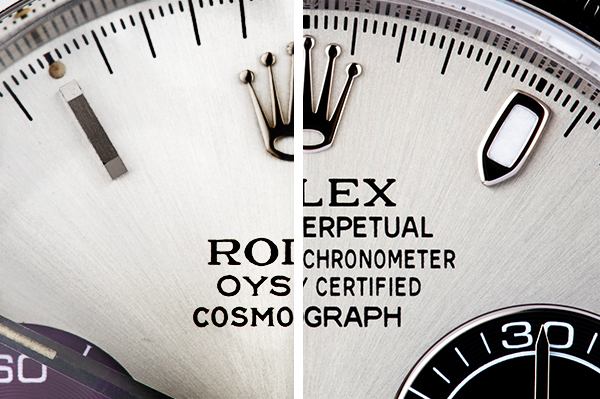
The dials have a subtle radial brushed finish called soleil, for its alluring sunburst effect when viewed in person. This exact surface is found on both the vintage example and the current model Cosmograph Daytona. This finish is known for its good contrast, durability and the discreet yet specific way it catches the light as the watch moves.
_____________________________________
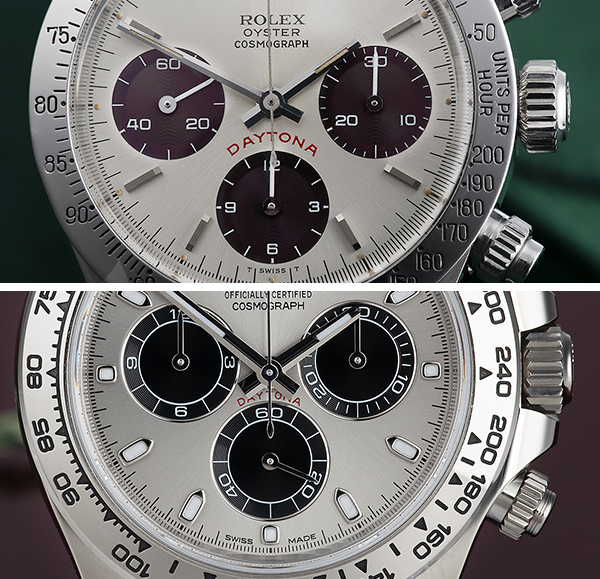
The charcoal sub-dials strongly echo those on the vintage model. However, an unexpected phenomenon is that the charcoal sub-dials of the vintage Daytona have begun to change colour to a rich dark plum.
The result of a gradual blanching of its pigments, this is typically called 'going tropical' due to the rich bronze suntanned colour that certain vintage sports Rolex develop. Collectors prize tropical dials for their beauty, rarity and the fact that they are effectively a 'mistake' by the manufacturer.
_____________________________________
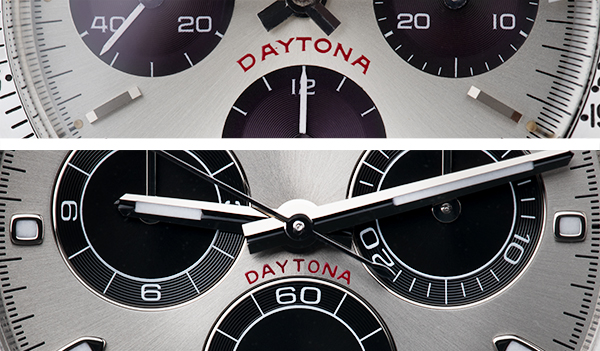
Both dials bear the distinctive model name 'Daytona' punctuated in red, the only pigmentation Rolex afforded this otherwise coolly achromatic dial.
_____________________________________
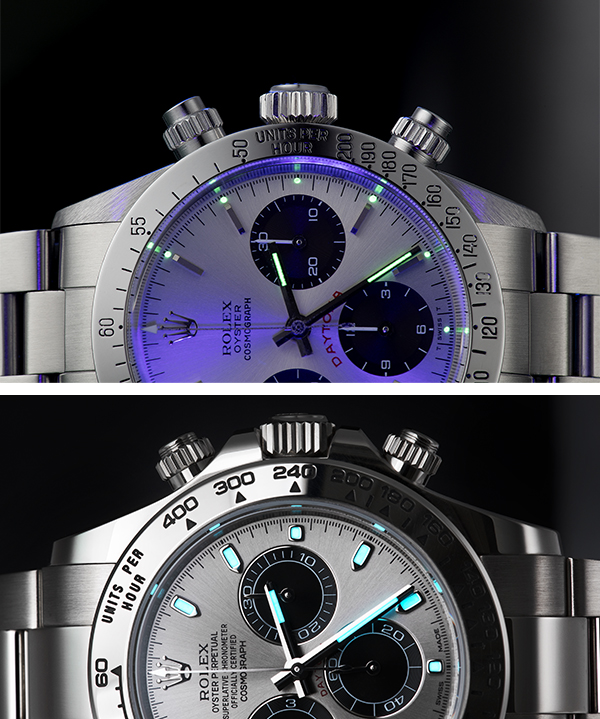
The little coffee-coloured dots over the hour chapters in the vintage Daytona are tritium luminous compound; the open-worked hands have a matching tritium fill, with a similar beautiful patina developing through their original white. Dials with tritium always indicate this discreetly somewhere, in this case as a pair of letters 'T' straddling the word 'Swiss' printed right at the bottom.
Tritium compound eventually loses its capacity to glow. Rolex now uses a material called 'Chromalight', a variant of 'Super-Luminova'. The current-model Daytona also has much larger hour chapters, letting the time really shine in low light.
_____________________________________
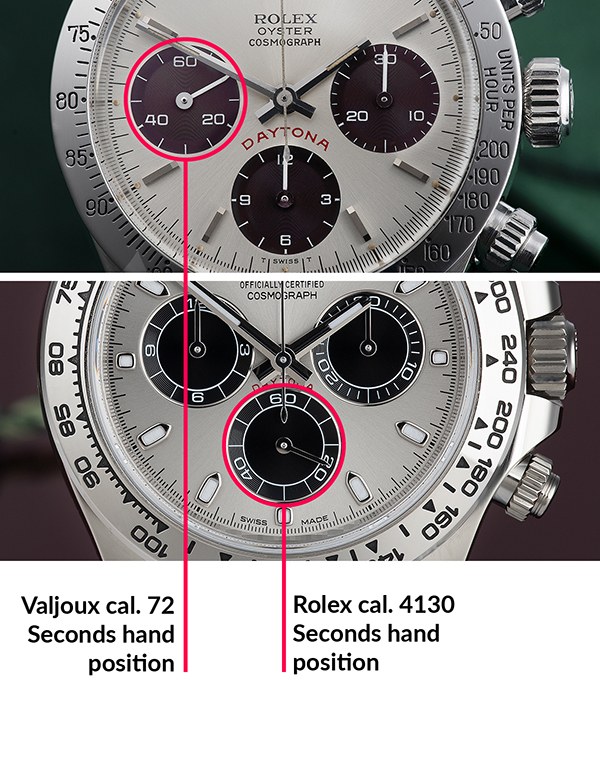
The congruent layout of the sub-dials on the two watches differ subtly in one important way: in the early model, the continuous (non-stopwatch) seconds dial is positioned near the 9 o'clock quadrant of the dial, whereas in the current white gold model it's at 6. This is because of technical differences between the two movements used.
_____________________________________
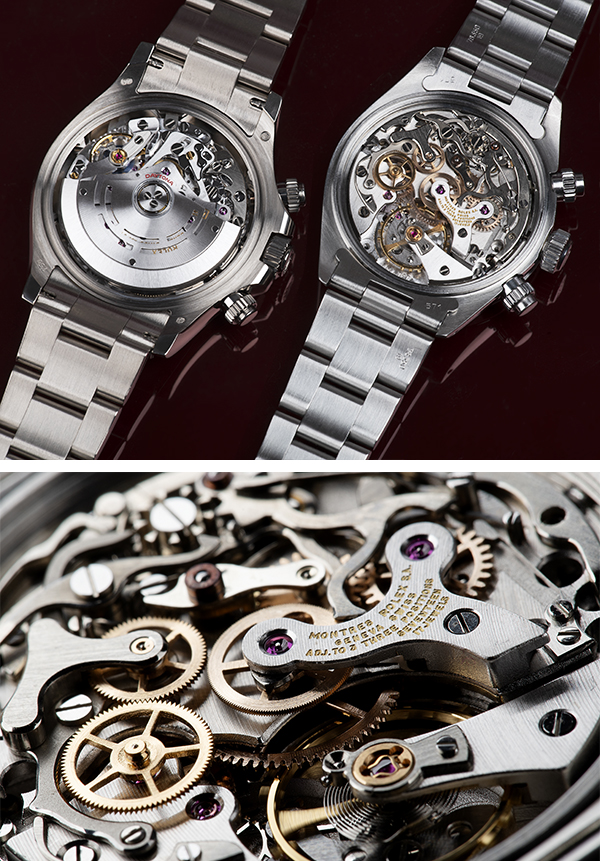
Inside the older Daytona is the 'Valjoux calibre 72', a famous manual-wind movement supplied to Rolex by the specialist Swiss firm Valjoux (seen at right and below). Rolex performed numerous modifications that helped render the calibre high-precision. In the late 1980s, they switched to an automatic-winding movement made by Zenith. In the year 2000 Rolex introduced their own beautiful in-house automatic chronograph calibre, the 4130, as seen here on the left.
_____________________________________
Prices of early Cosmograph Daytonas have a 30-year track record of solid performance. In 1969, the retail price of a Daytona was £109. As of 2021, decent examples are knocking on the door of £100,000, and the Paul Newman (or 'Exotic') regularly commands a quarter million. With honest technical purpose and remarkably stable aesthetics, it's not surprising that the value of both modern and vintage Daytonas has proved to be so bouyant.
_____________________________________
